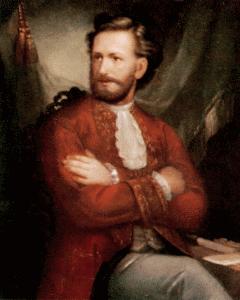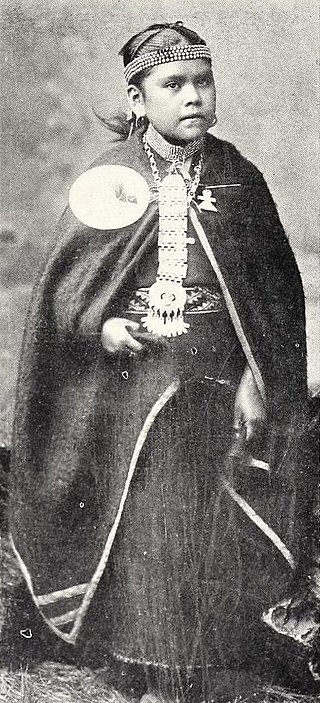Related Research Articles

1726 (MDCCXXVI) was a common year starting on Tuesday of the Gregorian calendar and a common year starting on Saturday of the Julian calendar, the 1726th year of the Common Era (CE) and Anno Domini (AD) designations, the 726th year of the 2nd millennium, the 26th year of the 18th century, and the 7th year of the 1720s decade. As of the start of 1726, the Gregorian calendar was 11 days ahead of the Julian calendar, which remained in localized use until 1923.

The Mapuche is a group of native indigenous inhabitants of south-central Chile and southwestern Argentina, including parts of Patagonia. The collective term refers to a wide-ranging ethnicity composed of various groups who share a common social, religious, and economic structure, as well as a common linguistic heritage as Mapudungun speakers. Their homelands once extended from Choapa Valley to the Chiloé Archipelago and later spread eastward to Puelmapu, a land comprising part of the Argentine pampa and Patagonia. Today the collective group makes up over 80% of the indigenous peoples in Chile and about 9% of the total Chilean population. The Mapuche are concentrated in the Araucanía region. Many have migrated from rural areas to the cities of Santiago and Buenos Aires for economic opportunities.

Toqui is a title conferred by the Mapuche on those chosen as leaders during times of war. The toqui is chosen in an assembly or parliament (coyag) of the chieftains (loncos) of various clans (Rehues) or confederation of clans (Aillarehues), allied during the war at hand. The toqui commanded strict obedience of all the warriors and their loncos during the war, would organize them into units and appoint leaders over them. This command would continue until the toqui was killed, abdicated (Cayancaru), was deposed in another parliament, or upon completion of the war for which he was chosen.

Gabriel Cano de Aponte was a Spanish soldier who served as Royal Governor of Chile from 1717 to 1733. His administration was the longest of all Colonial Governors and the second longest in the history of Chile after the administration of General Augusto Pinochet, who surpassed him by some eight months.

The Occupation of Araucanía or Pacification of Araucanía (1861–1883) was a series of military campaigns, agreements and penetrations by the Chilean army and settlers into Mapuche territory which led to the incorporation of Araucanía into Chilean national territory. Pacification of Araucanía was the expression used by the Chilean authorities for this process. The conflict was concurrent with Argentine campaigns against the Mapuche (1878–1885) and Chile's wars with Spain (1865–1866) and with Peru and Bolivia (1879–1883).
Tucapel is a town and commune in the Bío Bío Province, Bío Bío Region, Chile. It was once a region of Araucanía named for the Tucapel River. The name of the region derived from the rehue and aillarehue of the Moluche people of the area between the Lebu and the Lleulleu Rivers, who were famed for their long resistance to the Spanish in the Arauco War. Tucapel is also the name of a famous leader from that region in the first resistance against the Spanish mentioned in Alonso de Ercilla's epic poem La Araucana. Formerly belonging to the Ñuble Province, in the Yungay Department. Near the town of Tucapel is the Plaza de San Diego de Tucapel. The capital of the commune is the town of Huépil, moving the municipality from Tucapel in 1967. In Mapudungun the name Huépil means "To seize or to take by force".
Vilumilla was the Mapuche Toqui elected in 1722 to lead the Mapuche Uprising of 1723 against the Spanish for their violation of the peace.
San Rosendo is a Chilean city and commune in Bío Bío Province, Bío Bío Region.
Negrete is a Chilean town and commune in Bío Bío Province, Bío Bío Region. It is bordered by the commune of Los Ángeles to the north, Renaico to the south, Mulchén to the east and Nacimiento to the west.
The Parliament of Malloco was held between governor Juan Henríquez de Villalobos and leaders of the Mapuche in January 1671, at Malloco southwest of Santiago, Chile.
Curiñancu or Curignancu, Mapuche Toqui from 1766–1774 who led the Mapuche uprising of 1766.

The 1793 Parliament of Negrete was a diplomatic meeting between Mapuches and Spanish authorities held in Negrete. The parliament was held from March 4 to March 6 of 1793. 161 caciques and 2380 Mapuche warriors attended the meeting.

Mapuche silverwork is one of the best known aspects of Mapuche material culture. The adornments have been subject to changes in fashion but some designs have resisted change.
Mañil or Magnil was a Mapuche lonko who fought in the 1851 Chilean Revolution and led an uprising in 1859. He was the main chief of the Arribanos and the father of Quilapán who led Mapuche forces in the Occupation of Araucanía.
The Parliament of Las Canoas was a diplomatic meeting between Mapuche-Huilliches and Spanish authorities in 1793 held at the confluence of Rahue River and Damas River near what is today the city of Osorno. The parliament was summoned by the Royal Governor of Chile Ambrosio O'Higgins after the Spanish had suppressed an uprising by the Mapuche-Huilliches of Ranco and Río Bueno in 1792. The parliament is historically relevant since the treaty signed at the end of the meeting allowed the Spanish to reestablish the city of Osorno and secure the transit rights between Valdivia and the Spanish mainland settlements near Chiloé Archipelago. The indigenous signatories recognized the king of Spain as their sovereign but they kept considerable autonomy in the lands they did not cede. The treaty is unique in that it was the first time Mapuches formally ceded territory to the Spanish.
Parliament of Negrete may refer to:
In the history of colonial Chile, the Parliament of Boroa was a diplomatic meeting held on January 24, 1651, between various Mapuche groups and Spanish authorities held in the fields of Boroa. The parliament was attended by the Governor of Chile, Antonio Acuña Cabrera, who travelled to Boroa incognito from the fortress of Nacimiento in the north accompanied only by six men. This riskful crossing of Mapuche territory was considered a valiant but reckless stunt by Spanish subordinates.
The Mapuche uprising of 1723 was a rebellion of the Mapuche against the Spanish Empire and its colonial administration in present-day Chile. It began with the killing of Pascual Delgado by Mapuches and continued until Mapuche factions begun to sue for peace in 1725. The Spanish reinforced the fort of Purén, and most of the Spanish managed to find refuge in the various forts without being intercepted or harassed by Mapuches. On August Mapuche toki Vilumilla pushed north occupying Isla del Laja, that is the lands between Bío Bío and Laja rivers. The Spanish led by Manuel de Salamanca attacked a Mapuche encampment of warriors August 24, a day of heavy rain. The Mapuche initially fought with tenacity but came to believe they were being surrounded so they fled the scene.
The Mapuche uprising of 1766 was the last major Spanish–Mapuche conflict in Araucanía.
The Parliament of Tapihue of 1825 was a diplomatic agreement between fourteen Mapuche reductions and the newly established Republic of Chile. The Mapuche reductions were represented by the lonko Juan Mariluán and the republic by Colonel Pedro Barnachea. The agreement was aimed to end the Guerra a muerte conflict that had grown out from the Chilean War of Independence. It was also a means for the Chilean government to establish relations with Mapuches.
References
- ↑ León, Leonardo (2001). "El ordenamiento del espacio fronterizo mapuche, 1726–1760". Revista de historia social y de las mentalidades (5): 129–165. Retrieved 3 December 2013.
